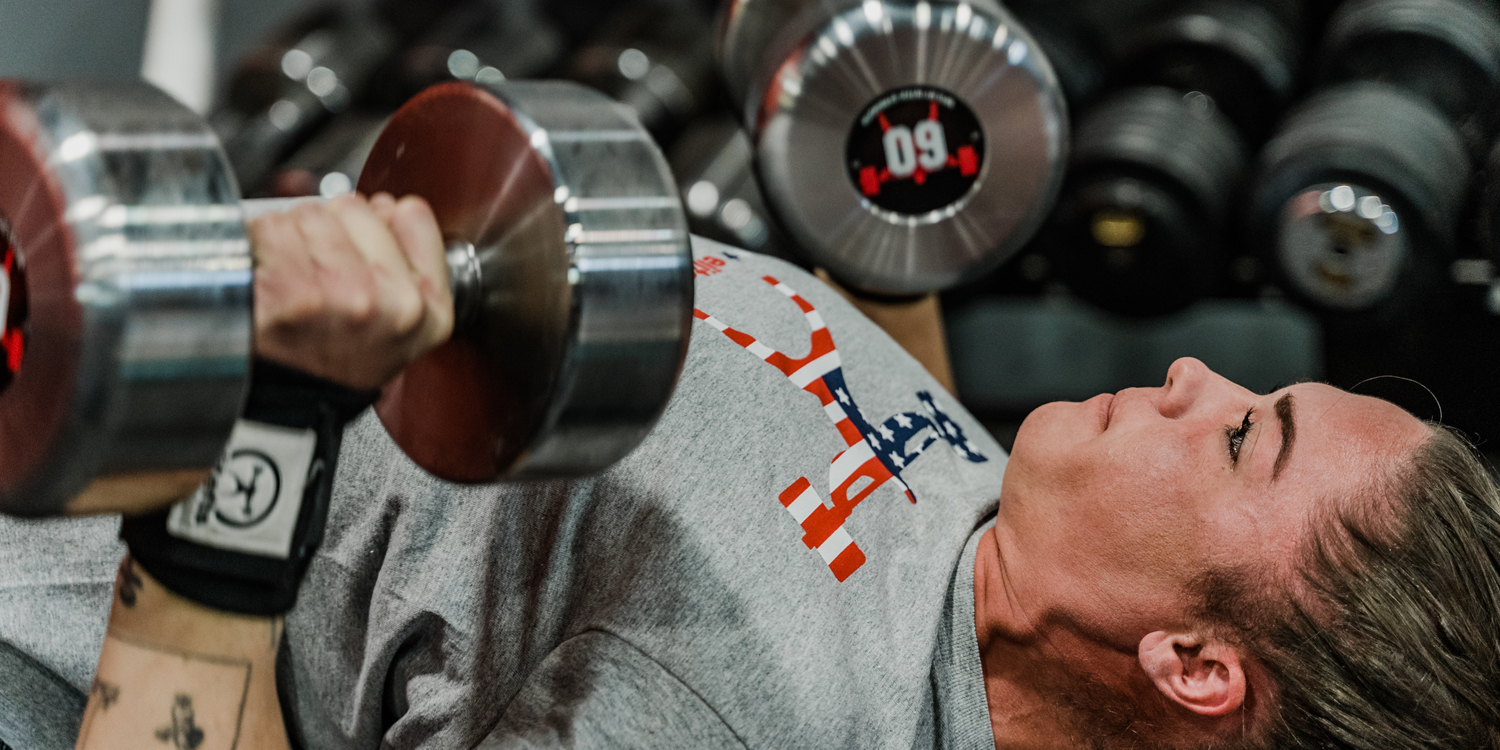
Allow me if you will, to paint you a picture with words. Specifically, as you are lifters, a picture with words describing an evening meal.
This meal is comprised of a savory and grilled to perfection filet mignon. The filet is cooked to your liking, be that rare, medium rare, medium, whatever suits your taste. Surrounding the filet is the perfect strip of bacon and topped with a savory garlic herb butter, creamy parmesan, or if you prefer, nothing.
Sitting on the dinner plate next to this exquisite cut of meat is a steaming hot baked potato with your choice of butter, brown sugar, or sour cream melting into the opening of the potato skin lying in perfect accompaniment to the filet. Sharing the plate are glazed and glistening long cut green beans with Harissa. You have a warm loaf of Italian bread on a separate plate and a pad of melting butter at the ready or to add as needed to your baked potato.
RECENT: Ernie Frantz and the History of Frantz Multi-Ply Gear
On a plate next to this trifecta of foods, and replacing the now-empty bowl of your favorite dinner soup, you enjoyed a perfectly prepared salad topped with your favorite dressing and a few well-placed and decorative croutons. For dessert, Tiramisu and a cup of coffee prepared to your liking.
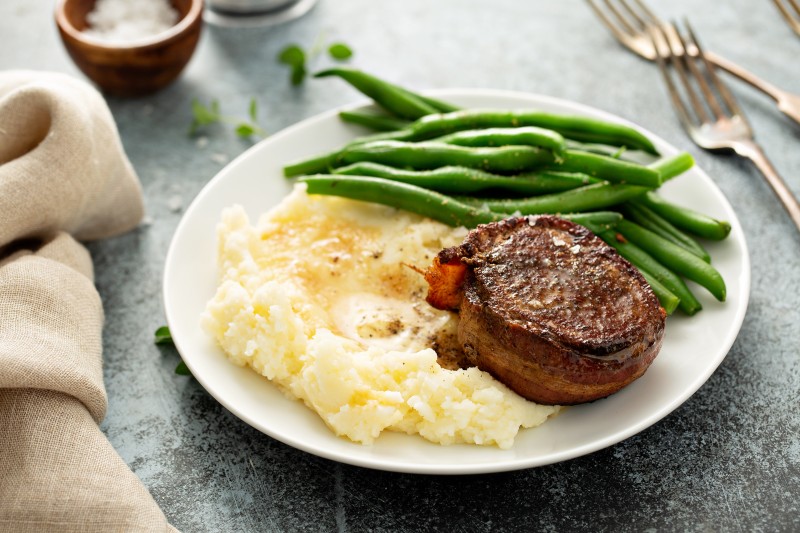
Elena Veselova © 123rf.com
Can you see it? Can you practically smell it as you imagine the fork in one hand and the razor-sharpened steak knife cutting into this juicy filet mignon with the other?
So in your mind's eye, picture this amazing meal. A perfect lifter's day before a meet meal with protein, veggies, carbs, and fats all prepared for you to feast on.
Now, for a moment, let’s hit the pause button with that steak dinner and put that on the warmer as we digress for a moment.
In my life outside of the gym as a lifter and gym owner of Monster Garage Gym, my professional life and means to my financial ends is my career serving students as a high school assistant principal. I am highly blessed and favored to get to work with, educate and help form young people’s minds through my life experiences, training as an educator, and my nearly 30 years in this career field. In my other life, as an aforementioned gym owner and powerlifter with some 30 years of powerlifting experience under my lifting belt, I am also highly blessed and favored to work with young powerlifters or older lifters who are new to the sport. New meaning sometimes with mere months or those first few basic years of powerlifting experience. Said another way, my life has and continues to be about helping others, and the longer one gets in the tooth, the more one learns, and the more one can help others.
As either group, high school students or newbies to powerlifting begin the learning process, questions arise. For that part of my life as a gym owner and powerlifter, a question that often arises as new lifters are in the midst of learning technique and the fundamentals of this great sport is, “How often should I use accommodating resistance? Every day, every other day, four times per week?”
The answer to that question goes back to our steak dinner. This perfect filet dinner is the new-to-powerlifting powerlifter’s metaphorical template. Their steak dinner represents their squats, deadlifts, or bench pressing. It represents their rudimental essentials, basic technique, consistency, focus, and work ethic. It is well-balanced and also represents their fundamental sets and reps and basic linear periodization. The steak, baked potato, veggies, bread, salad, dessert, and coffee represented in this perfect powerlifting dinner also metaphorically represent their barbells and weights.
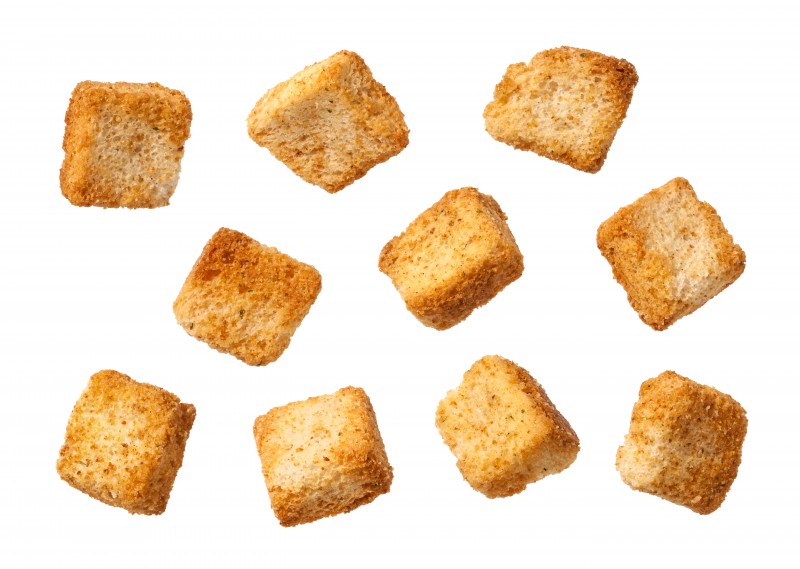
Tracy DeCourcy © 123rf.com
So what about those few well-placed and decorative croutons and salad dressing? What part of powerlifting do they play for the new lifter? The answer to that question for the brand new lifter is that they are the bands and chains. Said another way, they represent accommodating resistance, no more and no less. Bands and chains at this novice level are arguably the mere crunchy topping to the roughage portion of the meal for a brand new lifter. The fact of the matter is, they don’t really contribute to the meal as their role is not of importance, yet. Yet, as a lifter who is still in their infancy with regard to the world of powerlifting needs to stick to the basics, the steak, potato, and veggies—the technique, the form, squats out of a rack, bench press, and deadlift.
The staples, the foundation, the fundamental tools in the toolbox (the hammer, saw, screwdriver, and mastery of these) will eventually lend themselves to the utilization of more ancillary carpentry tools, be it an air compressor.
Can the new lifter partake in some croutons? Sure, absolutely, and 100 percent no harm there. That said, the tendency is for the newer lifter to emphasize, in this analogy, the croutons over the steak, potato, and veggies.
One typically sees young lifters, new to the sport lifters, making their whole meal out of croutons. They use bands and chains when they squat, they use bands and chains when they bench, and they use bands and chains when they deadlift—too many croutons, not enough beef.
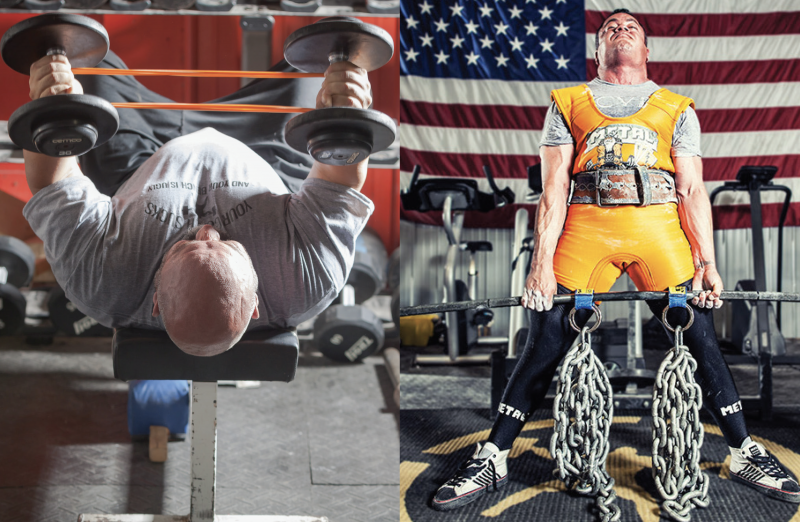
To use another analogy, it would be like someone brand new to the art form of painting. A brand new aspiring artist who has never painted as much as a paint stroke going out and purchasing the most elaborate and decorative and sophisticated brushes, paints, easel, canvas, and frame for a painting they have no idea how to paint, and with these tools they have no idea how to use and without understanding the basics of painting and how to mix the paints. They are still learning the difference between the brush types, the differences between oil and acrylic. All the nuance and basics are overshadowed by the focus and fixation on the tools they see the successful artists use who have already mastered the art of painting.
For the new powerlifter, it is important to keep in mind that methods that use a great deal of accommodating resistance are designed for the powerlifter who has already totaled elite. Understandably, the new-to-the-sport lifter wants to do what they see the elite lifters do, but doing what those elite lifters do is missing the mark. Focusing instead on what they did to become elite, well, that is the better recipe for success.
I recall the first time I read Louis Simmons' book on the Westside method. It's an interesting book as he writes just like he talks and required, for me anyway, to read the book then re-read several additional times to decipher his information. One thing that he made quite clear in his book, however, was that accommodating resistance for his lifters is critical but that each of his lifters are elite and once elite, utilizing accommodating resistance is a way to avoid falling victim to the trap of the diminishing sigmoid curve in training. A way for the elite totaling powerlifter to avoid stagnation, a plateau, burning out. He spends a great deal of time breaking the method down into smaller chunks involving percentages and the reasons behind the methodology. So to those new to the sport, they see some of the best using bands, they see them using chains, but without context of what got elite lifters to the elite level in the first place, the new-to-the-sport lifters build an entire training program based on this one aspect of his methods.
It would be like a lifter passing on the complete meal described above in lieu of nothing but protein shakes. The shake is the supplement to the meal, and for the newer lifter, the meal is the foundational aspect of a training program. Thus the bands and chains are at most a protein shake at the end of a six full meal day.
Now, more than ever before in the history of powerlifting is the sheer tonnage of information for the new lifter readily available. That said, now more than ever before in the history of powerlifting is the availability of sheer tonnage of really bad information. Bad information packaged as something new, shiny, and cutting edge. The newly discovered secret will make the duration from strong to strong(er) substantially shorter. The bad information that takes one aspect of a method designed for elite lifters and contorted and bastardized it into something it was never meant to be, Then marketed to those who know no better, but who simultaneously look up to those they see using these aspects of this larger program.
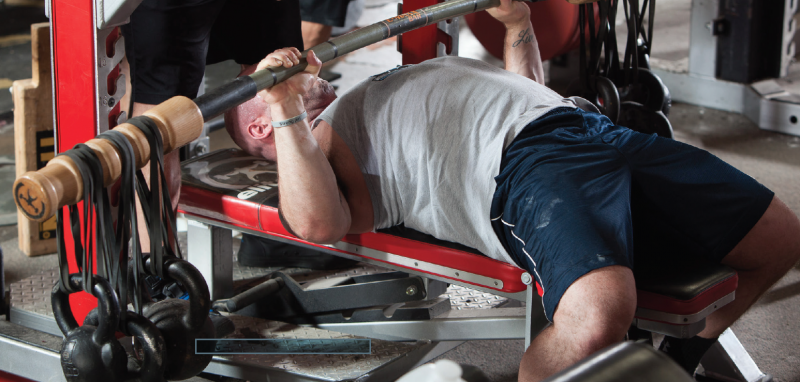
I have trained with some of the best lifters and some lifters who weren’t that great. The difference between the two is far less about genetic potential yet far more about malleability. The malleability of the new lifter, the ability for a new lifter to be shaped, formed, and honed through understanding training and focusing on and then mastering the basics helps establish the forward trajectory of the lifter. Providing them with the critical traction to slowly but surely overtake those who feast on the croutons rather than learning how to prepare then devour the steak dinner.
Although there is a time and a place for newbies to use such tools, those first three years of powerlifting will, when properly applied, yield the greatest power gains and strength increases proportionally than at any other time in the lifter’s powerlifting life. So we want to get the best out of those fleeting years and focus on technique and plain old-fashioned squatting, benching, and deadlifting. Whereas bands and chains are also great for the elite powerlifter to feel greater weight without being under constant greater weight, it also provides them time between their heavy straight weight days. At the more elite level, a serious squat training day could take weeks to recover from fully. There is a big difference between a 900-pound squatter’s max-effort workout to the 275-pound squatter’s max effort workout. The plain truth is although they are both exerting 100 percent effort, the recovery for these two is vastly different. New lifters can make great strength and power gains without risk of injury, whereas one minor error under a 900- to 1000-pound squat can end a lifter's career or slice a year out of their lifting life waiting for a detached tendon to repair after surgery. The sheer muscle recruitment is not there for those squatting 275 pounds vs. 900 pounds.
Bottom line, enjoy a crouton on your salad on occasion as a newer lifter but put your time and energy where you are going to get the most bang for your newbie buck, and that is on the meat and potatoes of your powerlifting training. Your first years set the stage for your powerlifting journey, be it a long and successful journey or an often derailed trip down a road to nowhere.
Don’t be in a rush. Be deliberate. Invest your time as a newer lifter and learn the basics. Build your foundation, hone your proper technique, apply intensity and discipline, consistency and work ethic, as these initial years will roll by quicker than you could possibly imagine. You are only a new lifter once, and that is a gift to take seriously and not to be squandered by dabbling in the post-elite aspects and methods of training. Be steeped in the foundational pillars that all great lifters have used from day one till their last meet and at all points in between.
A final thought you might ponder as you become a student of the sport is that you can also pass on the croutons altogether. Just as there are unworldly strong athletes who utilize bands and chains today, there are also names and faces from decades gone past who walked like giants among mere mortals and who dominated the powerlifting landscape yet not a chain nor band was utilized. They might not be names that are familiar to you as they come from a time when lifters trained for numbers vs training for followers. Names of gravitas and historical impact on the sport during their competitive years like Don Reinhoudt, Dave Pasanella, Ted Arcidi, Jim Cash, Ernie Frantz, Ed Coan, Bill Nichols, and Vince Annello. Food for thought as you create your own powerlifting dinner menu for success.
Wishing you the best in your training and meet preparation. Ever Onward.
Eric Maroscher is the owner of Monster Garage Gym (one of the premiere powerlifting gyms in the U.S., founded by Eric and Phillip Daniels, NFL Defensive End). He is also the leader of the Maroscher powerlifting team. Eric is a two-time WPC World Powerlifting Champion, two-time APF National Powerlifting Champion, WPC North American Powerlifting Champion, and multi-time APF Illinois State Champion.










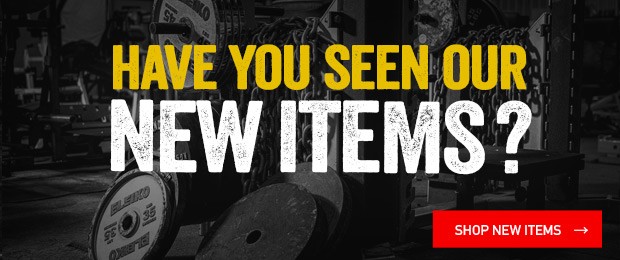
1 Comment